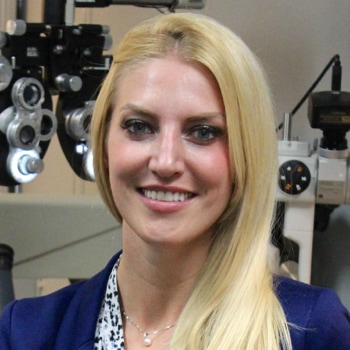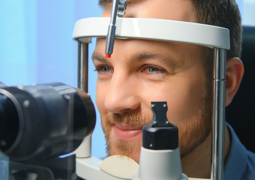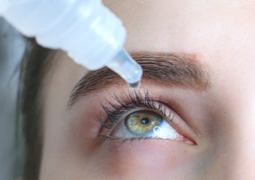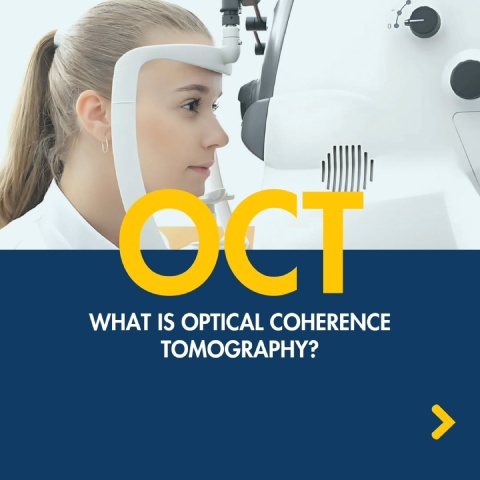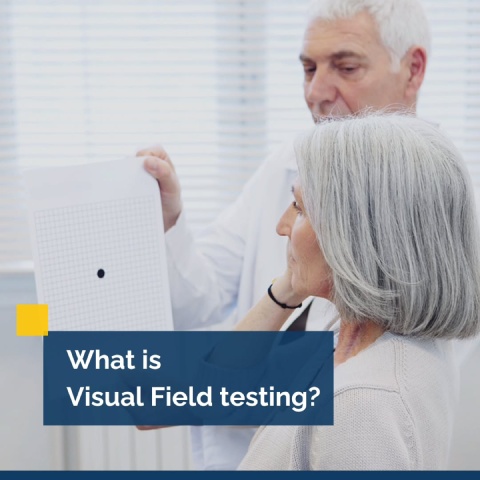Whether you’re struggling with blurred vision or having difficulty seeing things near or far away, these are common vision problems many people experience. You may hear words such as astigmatism, myopia, and hyperopia get tossed around, but what do they mean?
The difference between astigmatism, myopia, and hyperopia is the physical shape of your eye and how that shape changes where your vision becomes blurry. They’re all refractive errors your optometrist can diagnose with a comprehensive eye exam. Once we understand your condition, we try to correct your vision with eyeglasses or contact lenses.
What’s a Refractive Error?
Light’s journey begins when it hits the cornea, the eye’s clear front surface. It bends, or refracts, the incoming light into the lens. The lens’s job is to focus the light further, and it can adjust its shape depending on where the light is coming from so we can see objects near and far.
This focuses the light on the retina, the inner lining at the back of the eye. The retina is filled with millions of tiny light-sensitive cells called rods and cones. When light hits these cells, they generate electrical signals, which are sent to the brain via the optic nerve.
And voila! Our brain interprets these signals into the images we see.
But, if something goes wrong and light doesn’t strike the retina as it should, it may be due to a refractive error.
What is Astigmatism?
Astigmatism is a condition in which the eye’s curvature causes light to refract unevenly, leading to blurred or distorted vision at all distances.
At its core, astigmatism is caused by an irregularly shaped cornea. In a healthy eye, the cornea is spherical, similar to a beach ball. But in an eye with astigmatism, the cornea is more oval or oblong, like a football. This shape causes light to refract unevenly, scattering it across the retina. Astigmatism can also be caused by an irregularly shaped lens inside the eye.
Small differences in how your eyes grow can eventually become astigmatism, though it can also develop after an eye injury or as a side effect of eye surgery. Keratoconus, a condition where your cornea thins and bulges outward, can develop into a form of astigmatism.
Symptoms can vary depending on the severity. Some people may only experience mild blurriness or distortion, while others may struggle to see clearly at all distances. Astigmatism is typically diagnosed during a comprehensive eye exam, where we can determine the cornea’s and lens’s shape.
Fortunately, astigmatism can often be corrected with glasses, contact lenses, or laser eye surgery, depending on your preferences and needs!
What is Myopia?
Myopia, or nearsightedness, occurs when the eyeball grows too long or the cornea is too curved, leading light to focus in front of the retina rather than directly on it. As a result, distant objects appear blurry, while near objects remain in focus.
Myopia is very common. About 30% of the population has it, with some estimates saying as much as 50% of the world could have myopia by 2050.
Much like astigmatism, myopia can have a combination of risk factors. Children are more likely to develop myopia if their parents also have it. Some evidence points to environmental factors such as increased screen time and less time spent outdoors.
Myopia Control for Kids
Myopia is a progressive condition which can worsen over time if left uncorrected. The longer it’s left untreated, the higher the risk of complications later in life, such as:
- Macular degeneration
- Glaucoma
- Retinal detachment
- Cataracts
Myopia often occurs in young children, with some kids as young as 6–7 showing symptoms. This is why we want you to see us for eye exams annually. The earlier we uncover myopia, the sooner we can begin to try to control it.
While glasses and contact lenses can correct vision problems, myopia control involves specific treatments to slow down myopia progression in children. Since your child is like no one else’s, management plans must be designed with their needs and personality in mind.
These methods may include specialty eyeglasses and contact lenses that cue the eye to stop growing, in some cases slowing myopia progression by up to 67%. Common methods include:
- Zeiss MyoCare Lenses
- Hoya MiyoSmart Spectacle Lenses
- Coopervision MiSight 1 Day contact lenses
What is Hyperopia?
In many ways, hyperopia, or farsightedness, is the opposite of myopia. This condition occurs when the eyeball is shorter than the typical length or the cornea is flatter than the normal shape. This causes light rays to focus behind the retina instead of on it, causing nearby objects to appear blurred while distant objects remain clear.
Hyperopia can occur due to various reasons, including genetics and environmental factors. In some cases, children may be born with this condition due to the shape of their eyes. While it appears to be less common than myopia, many people may have some degree of hyperopia without ever realizing it. It typically only becomes a problem if it severely limits your ability to see.
A similar condition is presbyopia, where the eye’s lens loses its flexibility. This is a natural part of aging that can make it difficult to read fine print or in dim lighting. This can usually be treated with glasses or contact lenses for reading or full-time wear.
Learn More with an Eye Exam
Pay attention to changes in your or your family’s vision, and visit an optometrist regularly. If you are experiencing any of these vision problems, don’t hesitate to give Calgary Family Eye Doctors a call!
At the end of the day, these vision problems are treatable and can be corrected with the right care, be it surgery, eyeglasses, or contact lenses. And it all starts with you! Book your eye exam today and take the proactive step.



